Climate change: Shetland's power struggle between oil and wind
- Published

Nowhere else in the United Kingdom are the spoils of oil and gas more evident than on the Shetland Islands.
Wide roads which sweep along rugged clifftops and through lush valleys are so smooth you could play marbles on them.
In the centre of the main town, Lerwick, a stunning new school gleams in the September sunshine. Next door stands the Clickimin, an impressive leisure complex, one of eight on the islands - which are home to just 22,870 people.
There is one swimming pool for every 2,859 islanders.
At Sumburgh Airport, the air throbs with the noise of helicopters shuttling oil workers to and from offshore rigs and platforms. It's not as busy as it once was, but it's still going strong.
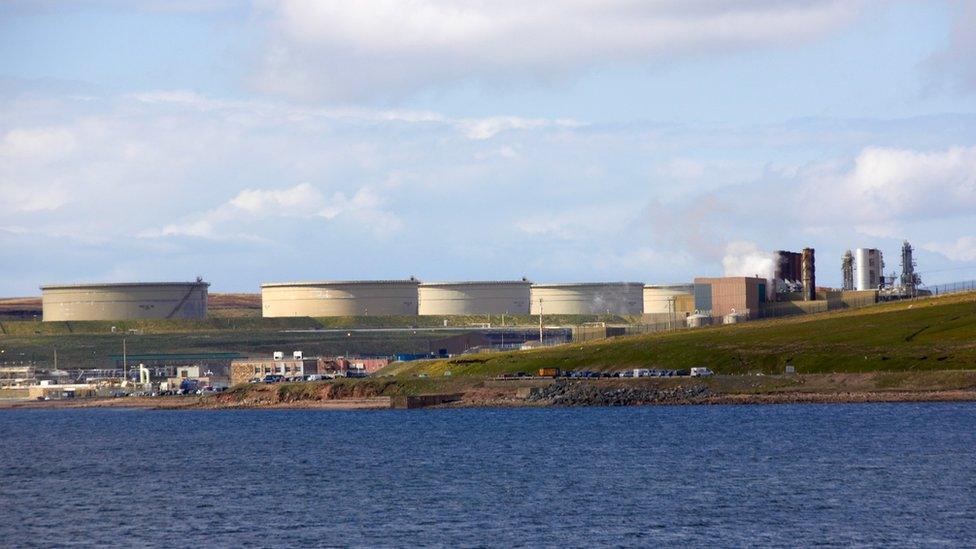
A giant oil terminal was constructed at Sullom Voe
Shetland is situated 110 miles north of the Scottish mainland, an archipelago of some 100 islands straddling the boundary between the North Sea and the Atlantic Ocean - and between cultures too. It retains strong Norse traditions but has been part of Scotland since the 15th Century.
Previously known for fishing and farming, when the drills struck oil in the North Sea in the 20th Century, Shetland struck black gold.
It negotiated a canny deal for the construction of a giant terminal at Sullom Voe, an inlet on the north of the largest of its 16 inhabited islands, which is known locally as the mainland.
The first crude oil from the North Sea was piped ashore in November 1978, followed in later years by supplies from fields off to the west in the North Atlantic.
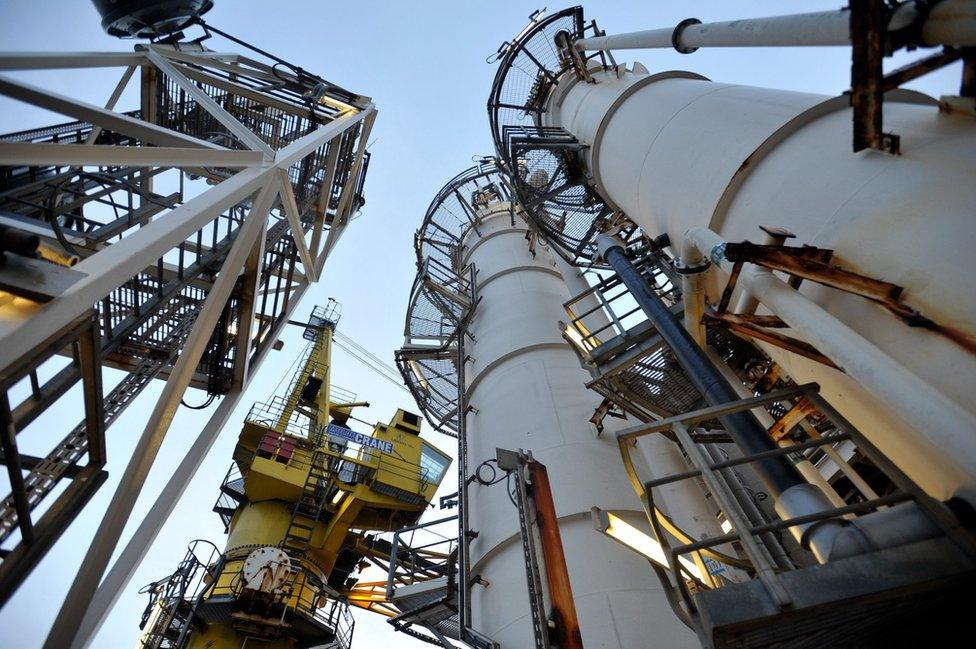
In return for the disruption, Zetland County Council - now Shetland Islands Council - was paid a fee for every barrel processed at Sullom Voe.
The money was invested in an oil fund which has so far disbursed more than £320m, external to social care and welfare programmes; the arts, sport and leisure; and the environment, natural history and heritage on the islands.
North Sea neighbour Norway, 190 miles to the east, took a similar approach to its oil reserves and now has one of the largest sovereign wealth funds on earth.
Could Scotland have done the same and become a wealthy independent country? Could the UK have adopted a similar policy and put its public finances on a stronger footing?
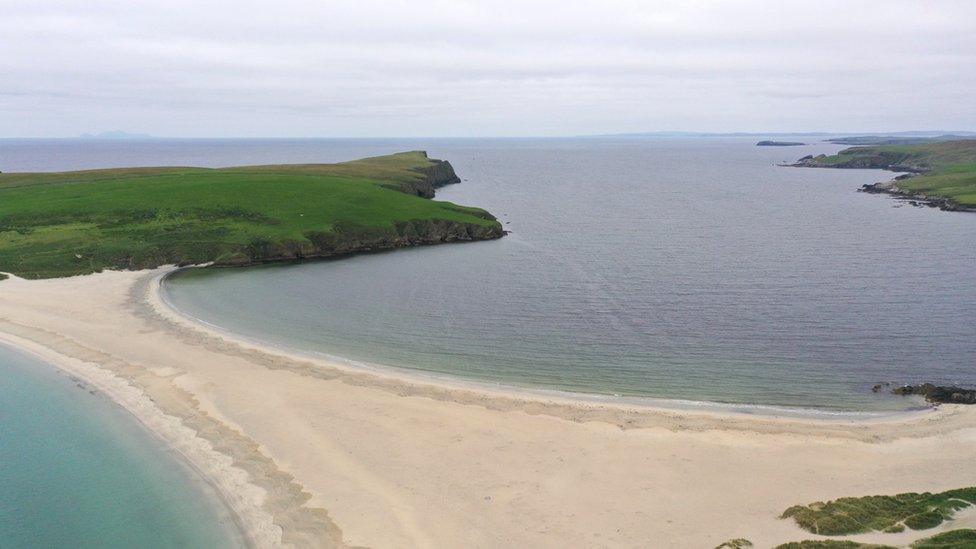
The view from St Ninian's beach, looking towards the site of the Cambo oil field
Nearly half a century after the pro-independence Scottish National Party coined the campaign slogan "It's Scotland's Oil", these are questions which still provoke heated, and sometimes bitter, debate, external.
But as the devastating impacts of climate change driven by the exploitation of fossil fuels, external have become clearer, the conversation has shifted rapidly and Shetland, along with the rest of the world, now faces a new question.
Should drilling stop immediately - and, if so, how would these islands cope without their grimy golden goose?
In climate campaigners' crosshairs is Cambo, a deep-water oil field around 125km (78 miles) west of Shetland which is estimated to contain about 800 million barrels of oil.
Siccar Point Energy and Shell have applied for a production licence and hope to extract oil between 2025 and 2050. They say the project would create about 1,000 direct jobs in Scotland and 2,000 more in the supply chain, as well as supporting another 500 elsewhere in the UK.

Cambo was discovered in 2002 but approval to exploit it has not yet been granted by the Oil and Gas Authority, a UK government agency - although British government ministers are making positive noises about the project and the OGA itself has spoken of the importance of continuing domestic production rather than relying on energy imports.
The SNP has struggled to articulate a clear position on Cambo, apparently torn between its traditional support for an industry which in recent years has supported 100,000 jobs and contributed £8.8bn annually to the Scottish economy, external, and a desire to position Scotland as a global leader in tackling climate change, especially during the crucial COP26 summit of world leaders in Glasgow this November.
"There are hard questions to ask," admitted the party's leader, Scotland's First Minister Nicola Sturgeon, when she was confronted by environmental activists, external on the subject last month - although it seemed the difficulty wasn't so much in asking the questions as in answering them with precision and detail.
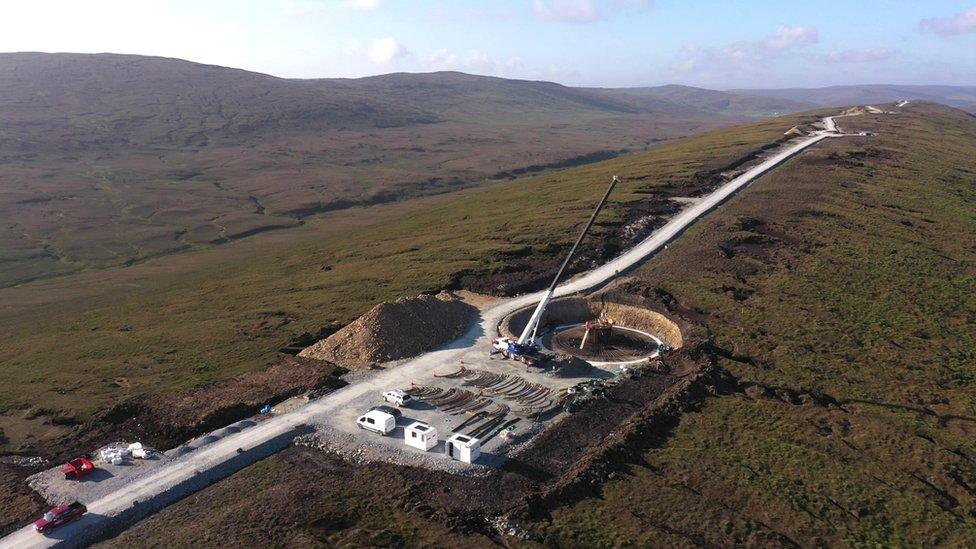
A vast new wind farm is being constructed on the Shetland mainland
The UK's Conservative Prime Minister Boris Johnson has also struggled with questions about Cambo. In a recent BBC interview, he said he was "not aware" of the proposal.
Even if it is given the go-ahead on economic grounds, Cambo may not provide much direct benefit to Shetland.
Under the existing plans, external, some gas would be piped to Sullom Voe but the oil would be taken off and away by tanker, bypassing the islands.
Still, the leader of Shetland Islands Council, independent councillor Steven Coutts, tells us he is not opposed to the project, which may support some jobs on the archipelago.
"There is no point in stopping production of oil and gas where we can control it in the UK, to see it being imported from outside the UK," says Mr Coutts.
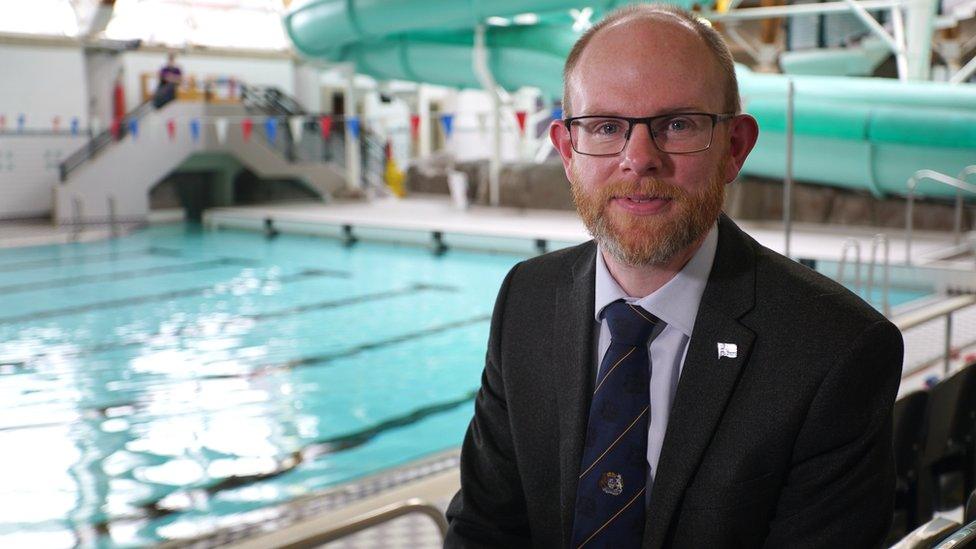
Steven Coutts is the leader of Shetland Islands Council
That view is shared by the oil tycoon Sir Ian Wood, who recently told the BBC it would be "absolutely crazy" to stop drilling.
Mr Coutts says it is not feasible to "flick the switch" on the oil and gas industry, adding: "We can't turn it off overnight."
Speaking to us in the Clickimin leisure centre, the council leader insists he is optimistic about the future, although he actually sounds rather worried.
It's all very well having eight swimming pools, but maintaining them and other facilities as oil fields are drained and revenue dwindles is a huge challenge.
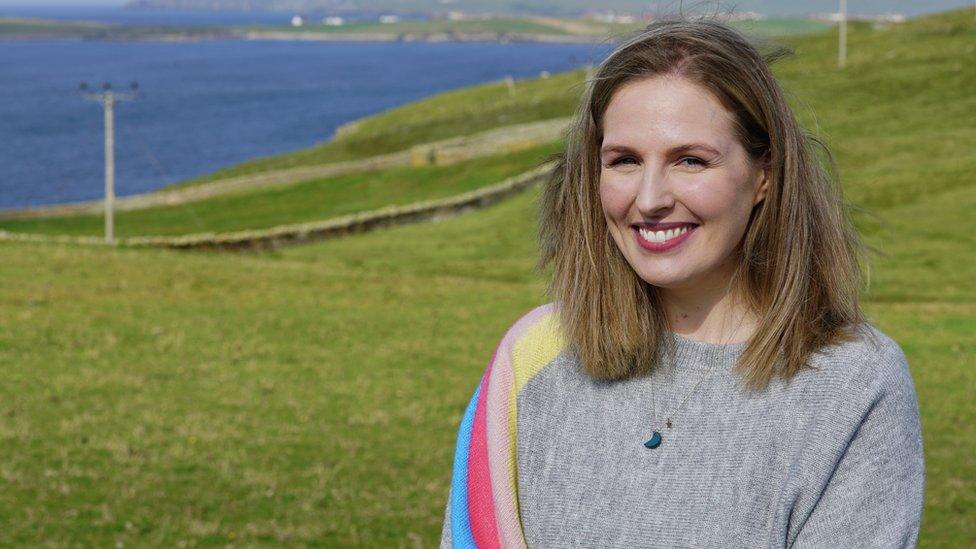
Claire Ferguson is drawing up Shetland's route map to net zero
Production at Sullom Voe peaked in the 1980s and Mr Coutts does not anticipate a similar bonanza from renewable energy.
"I think that will not be repeated," he says. "I think the circumstances have changed."
Charting Shetland's journey from fossil fuels to renewable technology is the daunting task now facing Claire Ferguson, the council's team leader for climate change strategy.
It's her job to draw up Shetland's route map to net zero - the point where the islands are conserving more carbon than they emit.
"Personally I think that we should be looking to other ways to transition to clean energy using the resource that we already have without creating new oilfields," she says.
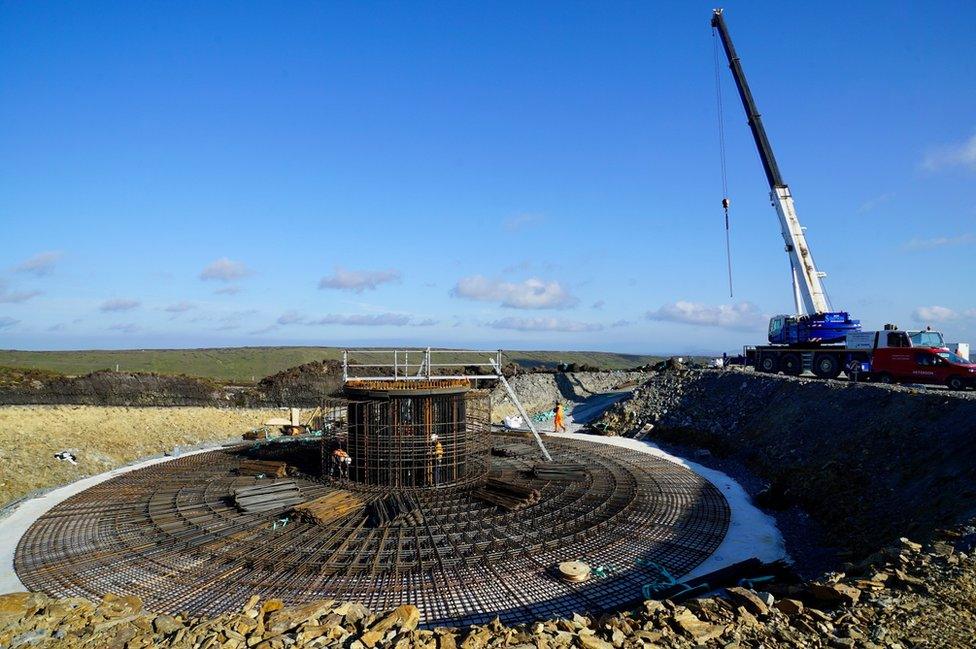
The wind farm is being constructed on an exposed peatland moor
She says the net zero map will be complex, involving six areas - energy; public and residential buildings; business and industry; waste; transport; and nature-based solutions.
But if Cambo is approved, she reckons it will become much harder to persuade individual Shetlanders and business owners to make the necessary changes themselves.
With COP26 approaching, she adds: "I feel we should be leading by example."
At the heart of the climate strategy is a vast new wind farm, external which is being constructed by SSE Renewables on an exposed peatland moor in the central mainland of Shetland.
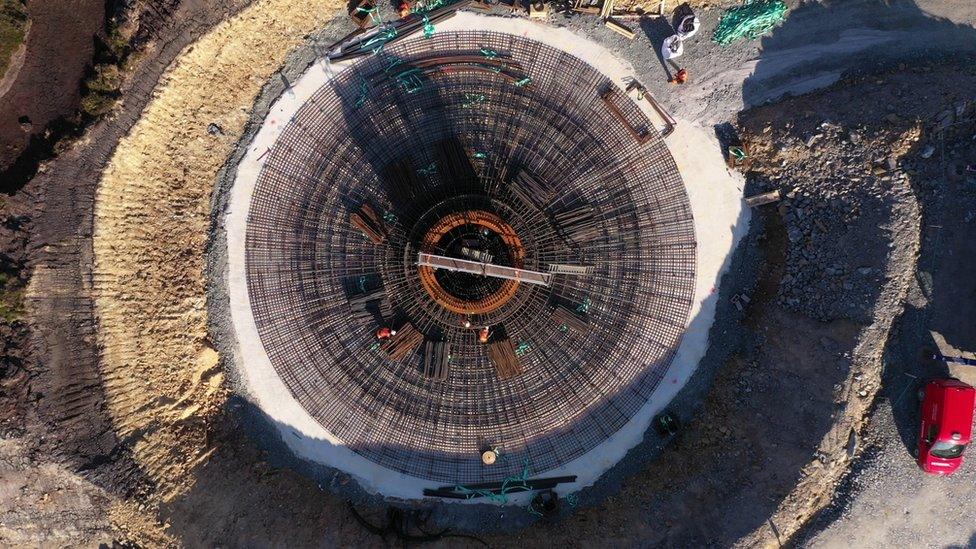
The foundations for the turbines are under construction
On the sprawling site, roads are being carved out, concrete poured and steel installed in the foundations for 103 giant 4.3MW turbines which will measure 155m (509ft) from ground to blade-tip and provide enough power, according to SSE, to meet the needs of 475,000 homes - or roughly 45 Shetlands.
To the horror of some islanders, the scheme will transform the landscape, with turbines standing sentinel along a prominent ridge and visible from miles around.
It will also transform the production and distribution of energy in Shetland, which is currently provided by a diesel power station in Lerwick and a gas-fired facility at Sullom Voe.
The Viking Project includes the laying of a high-voltage subsea cable connecting the islands to Caithness on the Scottish mainland, linking Shetland to the UK National Grid for the first time.
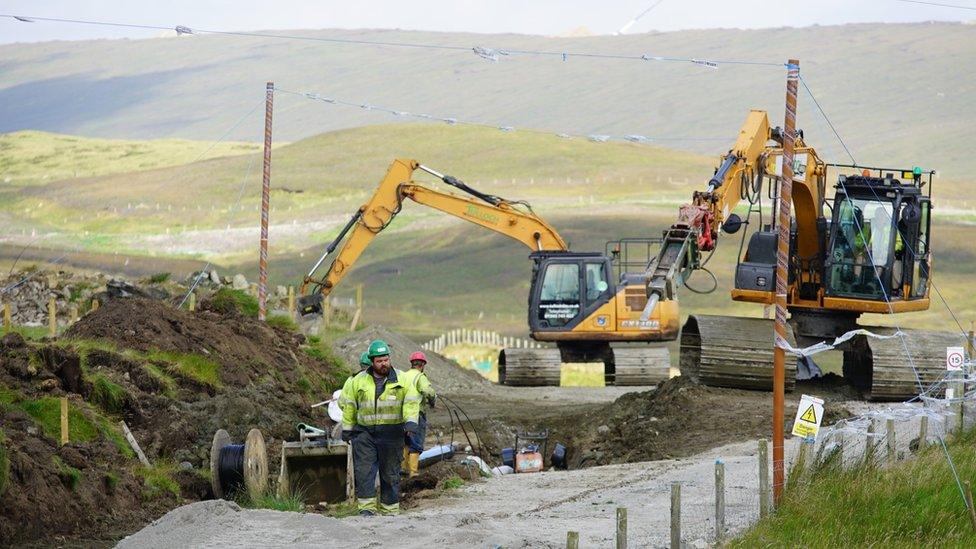
The transmission cable will allow electricity to flow south from the windfarm and, on the rare still day in what is the windiest part of the UK, for it to be pushed in the opposite direction to keep the lights on.
According to Aaron Priest, who manages the Viking project for SSE, the cable heralds a clean energy revolution for Shetland.
It will clear the way for more onshore wind projects, he says, along with floating offshore windfarms and "big potential for hydrogen production."
Critics call that "the industrialisation of Shetland".
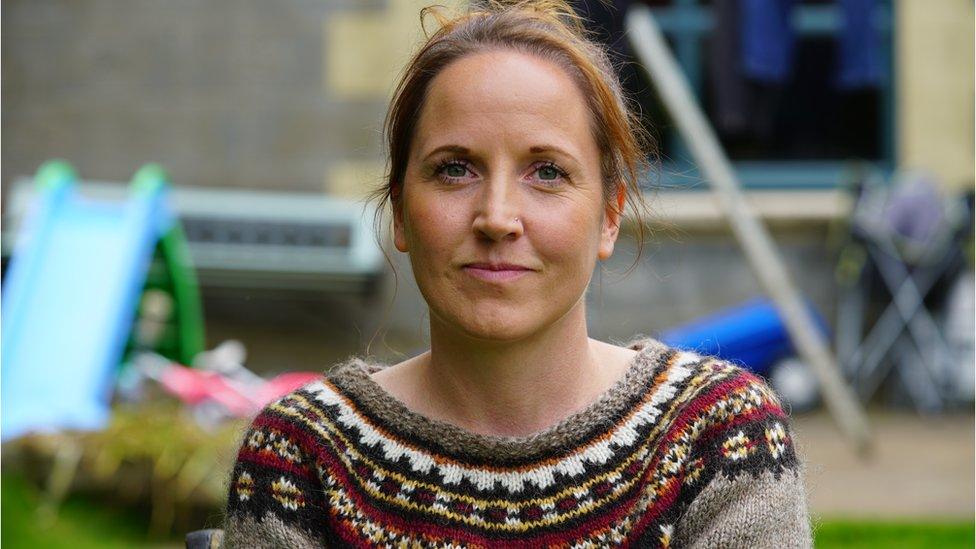
Laurie Goodlad is a local writer and tour guide
"In order to get the turbines up they're displacing the peat, which is a fossil fuel," says local writer and tour guide Laurie Goodlad.
Mr Priest accepts that the project is disrupting some stores of carbon, but he says the bog here was already badly eroded and insists SSE is committed to restoring 260 hectares (640 acres) of peatland on the 10,000 hectare (25,000 acre) site.
The actual footprint of wind farm infrastructure is just 165 hectares (408 acres), says Mr Priest, who insists the overall impact on the environment will be positive.
He says there will be "carbon payback" in less than two years, and from then on a saving of half a million tonnes of carbon dioxide from being produced annually.
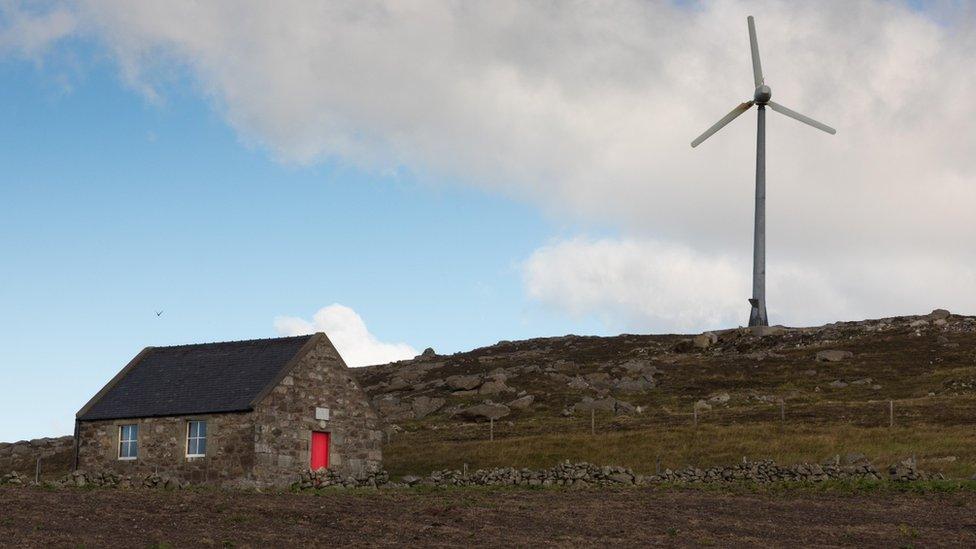
Ms Goodlad is not convinced. Nor does she see the economic case for Viking, which was originally a joint venture with the local council but is now, after years of controversy and planning permission battles, solely an SSE enterprise.
"Our whole island is going to suffer," says Ms Goodlad.
"Tourism will suffer. The lives of the people living nearby will suffer. And there's going to be absolutely no community benefit."
At present, says Mr Priest, there are 200 people working on the site, including 80 locals. The company has spent £12m on the project so far, he adds, supporting 48 local businesses in the supply chain - although SSE's website suggests it will create just 35 permanent jobs.
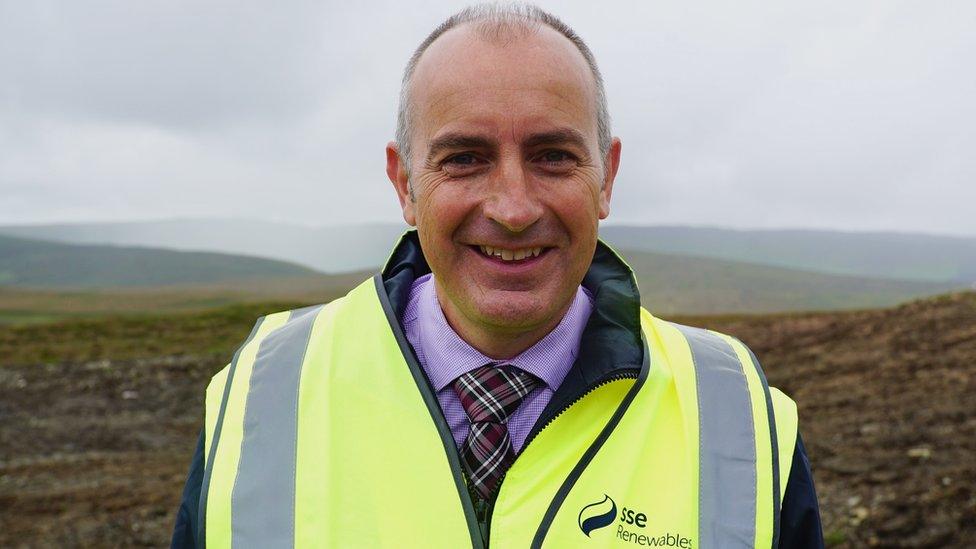
Aaron Priest manages the Viking project for SSE
SSE is setting up a community benefit fund of £2.2m a year to be spent on the islands, he adds.
"Shetland is over-dependent on oil and gas at the moment," insists Mr Priest. "It needs to diversify its economy."
But Ms Goodlad replies: "In 50 years' time, 100 years' time, we'll be looking at the rusted remains of the once-glittering wind farm and asking: 'What the hell were we thinking'?"
For her there is no contest between drilling for oil off the coast of these islands, and building a wind farm in the middle of them.
"As an environmentalist," says Ms Goodlad, "I would still choose Cambo."
All pictures are copyrighted.